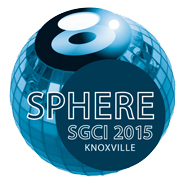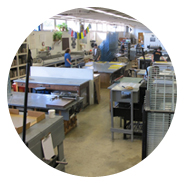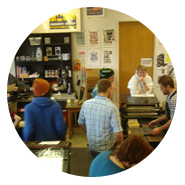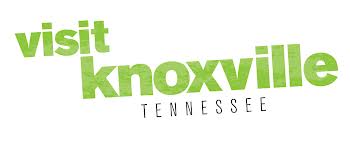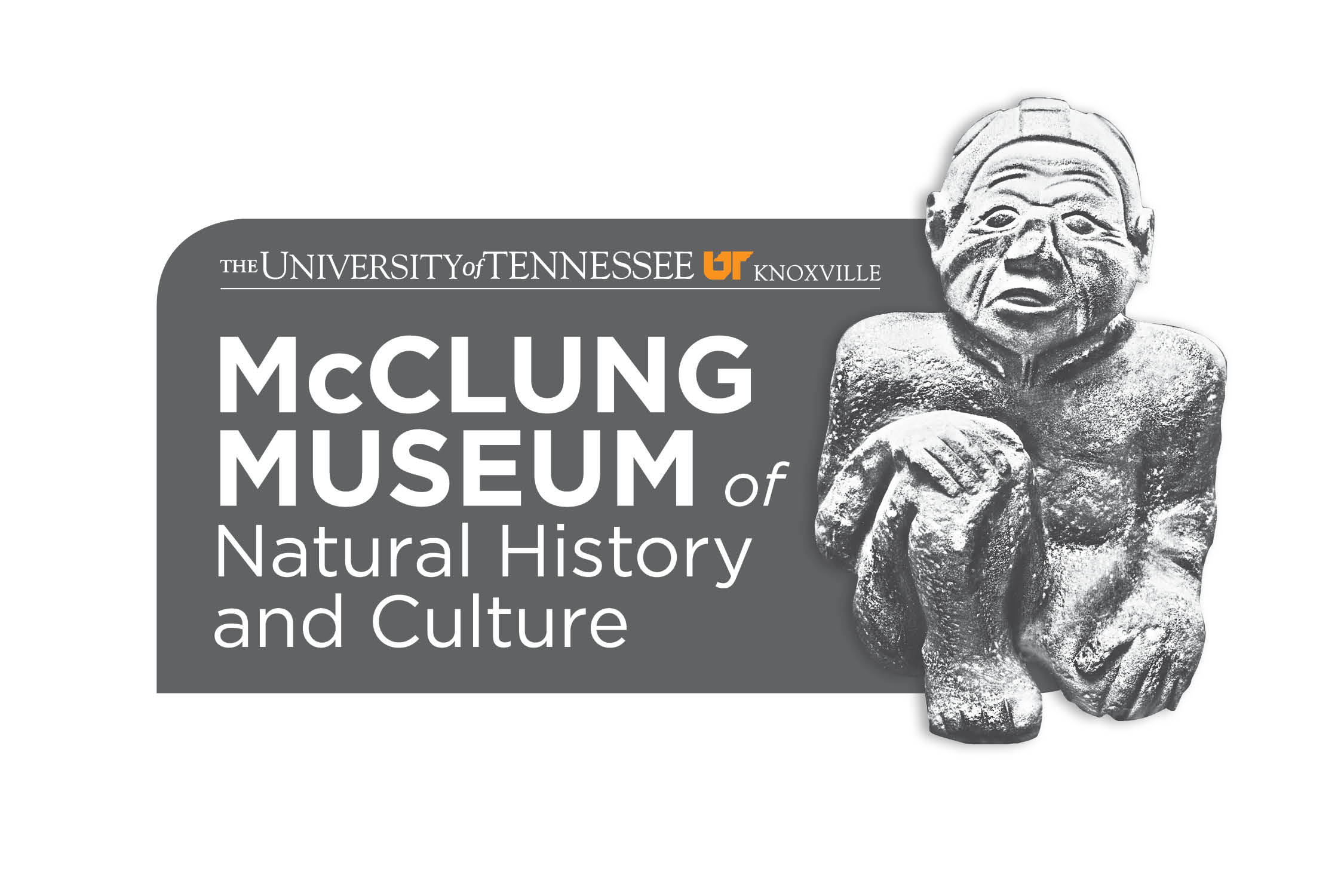panel session D3
IT'S A SMALL WORLD:
CREATING
COMMUNITY THROUGH PRINTMAKING
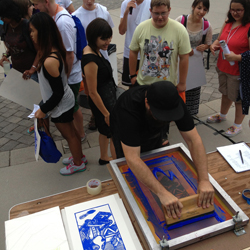
THURSDAY MARCH 19, 3:30-5:00PM
KNOXVILLE CONVENTION CENTER LECTURE HALL
Session Chairs: Jade Hoyer, University of Tennessee, Knoxville, Tennessee, USA
and Cynthia Tidler, University of Wisconsin – Madison, Wisconsin, USA.
Email: studentpanel.sgci2015@gmail.com.
Printmaking encourages community, whether in our college and university printshops, in our independent printshops, or even in the relationships we develop with other printmakers across the country and world. This year’s student panel will address printmaking communities including printmaking departments, Print Clubs, community printshops, collaborations, and more. We welcome discussion on how to develop Print Culture. What makes a strong print culture and community? What places have it? How do we create and encourage it? Current and recently graduated students were encouraged to apply.
Presenter 1: Kate Horvat, Arizona State University, Tempe, Arizona, USA
Paper Title: A Buncha Book Artists – The Importance of an Interdisciplinary Artist Community
An organized community of artists can guide a concept from ideation to implementation. The cross-pollination that occurs when visual and non-visual artists come together to write, design, and fabricate artists’ books has the potential to produce innovative work. Arizona State University’s student-run club, A Buncha Book Artists (ABBA), continually demonstrates the richness of a cross-disciplinary artist community. ABBA is a coalition of interdisciplinary artists and writers working in the contemporary book arts movement. It consists of undergraduate and graduate students, faculty, and independent artists of all experience levels. Interdisciplinary meetings are a way for writers and artists to plan, work, and share in a structured setting.
Presenter 2: Jade Hoyer, University of Tennessee, Knoxville, Tennessee, USA
Paper Title: Escaping the Bubble: Inter-Campus Print Communities
The printshop naturally encourages community. Intriguingly, printmakers engage in their own shop communities simultaneously across the country and world. This presentation focuses on student printmakers’ efforts to grow community one step beyond their own campuses, with a particular emphasis on the student printmaker and the campus printshop. Hoyer will speak in particular about her efforts to encourage intercampus community through coordinating an exhibition with first year MFA students from across the country, her involvement as a graduate student at the University of Tennessee, Knoxville, and her international experience encouraging exchange between the Philippines and the United States.
Presenter 3: Ryan McCullough, University of Georgia, Athens, Georgia, USA
Paper Title: Hybrid Sessions: Improvisational-Collaborative Monoprinting
We all know that the world of printmaking is small. Conferences, printmaking departments in universities, co-ops, print-centric blogs and websites are ways we bring our respective shops and studio practices together. This allows a more rapid exchange of ideas, techniques and materials. It is a good thing that we have a sense of community, it means we do not have to move through the landscape of the printmaking tradition alone. It is only with this confidence that I could open the circle and broaden the network of my printmaking studio practice by inviting visual artists from other media specialties as well as non-visual artists and research scholars into the studio to make improvisational collaborative monoprints. Similar to jazz musicians that shuffle players and instrumentation to embrace that moment in time, monoprint sessions are a reflection of the energy of the individuals and the overlap of their ideas. These are Hybrid Sessions!
Presenter 4: Sarita Zaleha, University of Iowa, Iowa City, Iowa, USA
Paper Title: Angles at Structuring Community: Establishing a University Print Club and The Printed Gif (a communal print website)
Building community through art is one of the main goals of my work as an artist. I am concerned with creating communities within and beyond printmaking. I have approached this through my involvement with a university print club, my own work as an artist, and promoting a communal print website.
